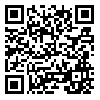BibTeX | RIS | EndNote | Medlars | ProCite | Reference Manager | RefWorks
Send citation to:
URL: http://jhsw.tums.ac.ir/article-1-5302-en.html
2- Associate Professor, Department of Occupational Health Engineering, Faculty of Public Health, University of Medical Sciences, Tehran, Iran ,
3- Professor, Department of Occupational Health Engineering, Faculty of Public Health, University of Medical Sciences, Tehran, Iran
4- Associate Professor, Department of Biostatistics, Faculty of Public Health, University of Medical Sciences, Tehran, Iran
Introduction: In Laboratory accusations a wide range of hand-held tools are used due to nature of their work. Long-term and repeated use of these tools has led the laboratory workers to suffer from upper limb disorders. The present study was designed and implemented with the aim of investigating the usability of different models of pipettes used in the laboratories of the Tehran University of Medical Sciences, employing subjective assessment methods for selecting the best pipette models.
.
Material and Method: This cross-sectional and analytical-descriptive study was performed among 35 laboratories employees of Tehran University of Medical Sciences. First, four models of the widely used pipettes were selected and their usability-related characteristics were investigated by a visual analog scale (VAS). Judgments concerned the usability of the pipettes done based on the criteria provided by the International Organization for Standardization 9241-11(1998) and 20282-2(2006). Data analysis was performed, using SPSS software version 22.
.
Result: The overall evaluation of the users in relation to the characteristics of the pipettes indicated that the highest VAS score was belonged to pipette A, C, and D, respectively. Furthermore, pipette B was selected as the most undesirable one by users. Results related to the usability criteria of pipette showed that of the four models of study pipettes, pipette A has been ranked first in two criteria (satisfaction and effectiveness). Regarding the efficiency, the first rank was for C pipette and the second rank was for pipette A. Pipette B obtained the lowest scores for all given criteria.
.
Conclusion: Shorter and lighter pipettes, which were designed according to ergonomic principles, had greater usability from the perspective of users and it could cause a better subjective assessment comparing to the other models.
Received: 2015/09/7 | Accepted: 2015/09/7 | Published: 2015/09/7
| Rights and permissions | |
 |
This work is licensed under a Creative Commons Attribution-NonCommercial 4.0 International License. |





